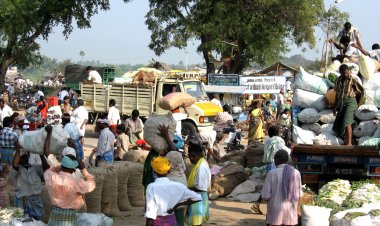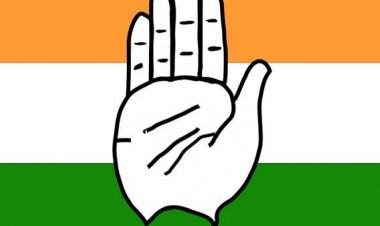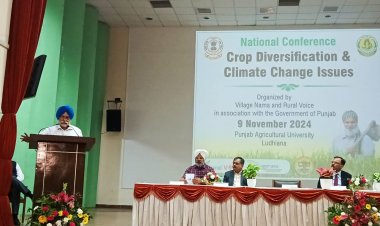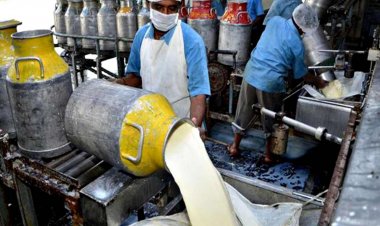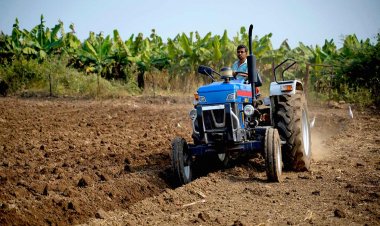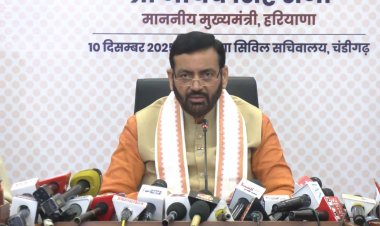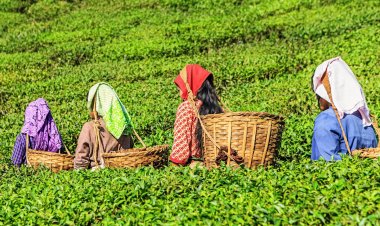Water Crisis: The Major Challenge Facing Farmers in Amrit Kaal
India is fast moving from being a water-stressed country to a water-scarce country.

India is fast moving from being a water-stressed country to a water-scarce country. The country has 18% of the world’s population, but the average per capita water availability is about 1319 m³/year, according to an official report from 2022.
Balwinder Sidhu, former Commissioner of Agriculture for the Government of Punjab, highlighted this dire situation at a recent conference attended by top agricultural experts. The event, organized by the Bharat Krishak Samaj and Rural Voice at the India International Centre in Delhi, focused on all critical issues facing India’s agriculture sector on the road ahead for the next 25 years.
The seminar was jointly organized at the India International Centre in Delhi by the Bharat Krishak Samaj, a leading farmers’ organization, and Rural Voice, a digital news platform primarily focused on agricultural and rural sectors.
The day-long deliberations on the topic “Agriculture in the Amrit Kaal” saw speakers discussing issues like water, power, technology, digitalization, and marketing.
Speaking at length on the water resources scenario of India, Sidhu said the country accounts for 4% of the world’s renewable water resources and 2.4% of the global land mass, but 18% of the global population and 18% of global livestock are facing continuously decreasing per capita availability and diminishing quality of water.
Spatial and temporal variability in availability is likely to increase due to climate change, he said, adding that already 600 million people face high to extreme water stress; 75% of households lack drinking water on-premises, and 84% of rural households do not have piped water access.
By 2030, the country’s water demand is projected to be twice the available supply, he said, citing a 2019 NITI Aayog report.
Even during the monsoon season, which lasts about four months, the rainy days are only about 20-25, resulting in just 100-150 hours of rainfall. Furthermore, there is variability in rainfall from year to year. The storage capacity of large dams is shrinking due to a decrease in capacity and catchment area. Several water basins (Indus, Sabarmati, Pennar, Krishna, etc.) will reach physically water-scarce conditions by 2050, where the remaining utilizable water supply cannot be further developed due to ecological constraints and downstream use.
**Shrinking Canal Command Areas**
The Compound Annual Growth Rate (CAGR) of the canal system, which was 7.29% up to 1974-75, now stands at 0.52% up to 2014-15. The gap between irrigation potential created and utilized is higher for major and medium systems compared to minor irrigation.
The stage of groundwater extraction (SGWE) is very high in Haryana (134.14%), Punjab (165.99%), and Rajasthan (151.07%). In the states of Delhi, Tamil Nadu, UP, Karnataka, and the Union Territories of Chandigarh, Lakshadweep, and Puducherry, the SGWE is between 70-100%.
The area with water levels more than 10 meters deep was 30% in 2000 and has increased to more than 75% in 2020.
Climate change is causing substantial damages and irrevocable losses in terrestrial, freshwater, coastal, and ocean ecosystems. The choices we make now will determine the future impact. Climate change scenarios for the 2030s indicate an overall warming for all regions, causing higher water needs.
- The net increase in annual temperatures may be between 1.7°C – 2.2°C. The extreme maximum and minimum temperatures are also projected to increase.
- All regions are projected to experience an increase in precipitation by the 2030s compared to the 1970s, with the maximum increase likely in the Himalayan region and the minimum in the Northeastern region.
- Sea levels along the Indian coast have been rising at the rate of 1.3 mm/year. In the future, it is likely to rise in consonance with the global increase, with increasing cyclonic intensity.
- Water yield is projected to increase in the Himalayan region by 5-20%, but it is likely to be variable across the Northeastern region, Western Ghats, and Coastal region.
- Moderate to extreme drought severity is projected in the Himalayan region compared to other regions. All regions are likely to experience flooding, exceeding existing magnitudes by 10% to 30%.



 Join the RuralVoice whatsapp group
Join the RuralVoice whatsapp group

















